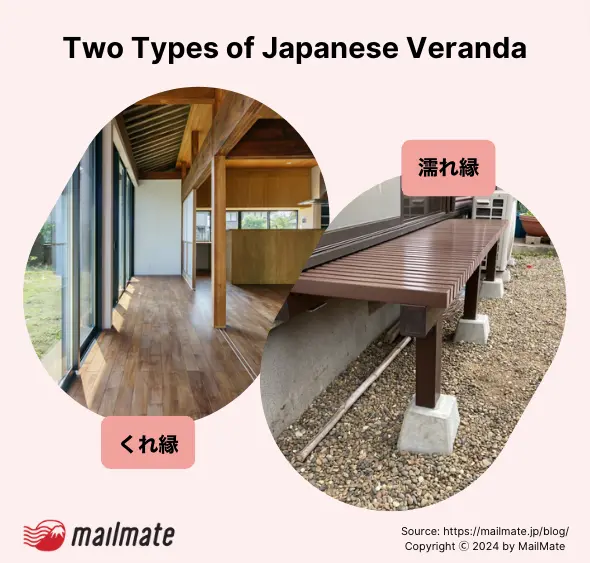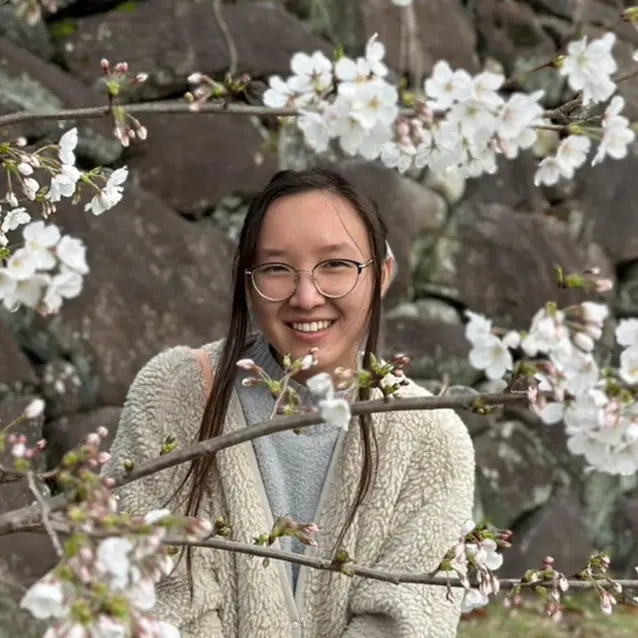Akiya Furniture: Keep, Sell, or Toss? Your Guide

Just bought an akiya house and are wondering what to do with the akiya furniture?
If you have bought a Japanese house in inaka Japan and have found several furniture items inside of the house—this article is for you.
Houses in Japan's countryside tend to have a more traditional Japanese house layout, and you'll often find furniture that is unique to these houses.
Understanding these furniture items isn't just about decoration—it's about embracing a way of life that has evolved over centuries.
This guide will help you identify, evaluate, and make informed decisions about the traditional furniture you'll encounter in your akiya home.
1. Zabuton (座布団) - floor cushions

A common alternative to chairs, Zabuton is a type of akiya furniture that is a floor pillow, used in the living room or family room.
They provide a bit of comfort when sitting on tatami mats, typically in the dining area or living area.
A zabuton is usually a rectangular cushion, often decorated with classic Japanese wagara patterns.
If your akiya house already has some, be sure to wash them before use. If not, you can easily find new ones to make sitting on the floor more comfortable for friends and family.
Historical context
Dating back to the Heian period (794-1185), zabuton were originally luxury items for the aristocracy. The quality of silk covers and intricate patterns indicated social status. Today, they remain essential for proper Japanese etiquette in traditional settings.
Practical information
Standard Size: 59cm × 63cm × 5cm thick
Price Range: ¥1,500-¥8,000 (new), ¥300-¥2,000 (used)
Where to Buy: Nitori, IKEA Japan, Don Quijote, local fabric shops
Care and maintenance
Washing: Remove covers if possible; spot clean foam interior
Storage: Keep in dry, well-ventilated areas to prevent mold
Replacement Schedule: Every 2-3 years with regular use
Safety Tip: Check for dust mites and allergens before use, especially in long-vacant akiya homes.
2. Futon (布団) - Traditional bedding

A futon is a traditional Japanese bedding set that includes a foldable mattress and duvet, typically laid out on tatami mats for sleeping at night.
It’s a great space-saving option, as the bedding can be folded and stored away during the day.
If you're looking to buy a futon, many online home goods retailers and furniture stores offer a wide selection.
Space-saving benefits
A single 6-tatami room (approximately 10 square meters) can serve as both bedroom and living space when futon are properly stored. This flexibility was crucial in traditional Japanese homes where space was at a premium.
Practical information
Standard Sizes: Single (100×200cm), Double (140×200cm)
Price Range: ¥15,000-¥50,000 (complete set, new)
Where to Buy: Muji, Nishikawa, local futon shops
Seasonal Variations: Heavier winter sets, lighter summer versions
Health and hygiene considerations
Important: Never use futon left by previous owners without professional cleaning or replacement. Moisture, dust mites, and potential mold make this a health priority.
Care instructions
Daily: Fold and air in well-ventilated area
Weekly: Sun-dry on sunny days (UV kills bacteria)
Monthly: Professional cleaning or thorough beating
Storage: Use futon storage bags during humid months
3. Obutsudan (お仏壇), Kamidana (神棚) - Religious Altars
Traditional Japanese houses typically feature two types of altars: the Obutsudan (お仏壇) and the Kamidana (神棚).
Obutsudan (お仏壇)

An obutsudan is a wooden cabinet typically with a statue or image of Buddha, along with images of deceased family members and other religious items such as incense, candles, and offerings such as fruit or rice.
Those who use an obutsudan will light incense, recite sutras, offer food or flowers to honor the deceased and seek blessings from Buddha.
Respectful handling:
Contact local Buddhist temple for guidance
Many temples will accept unwanted altars
Never dispose of memorial items in regular trash
Consider donation to Buddhist communities
Kamidana (神棚)

Kamidana is a Shinto altar for Shinto deities. It is usually a shelf with talismans and offerings on a high wall.
People will offer food, water, and sake while bowing in prayer.
Proper removal:
Contact local Shinto shrine
Return ofuda to issuing shrine
Cleanse area with salt after removal
4. Kukurimakura (括り枕) - traditional pillows

A kukurimakura is a traditional Japanese pillow traditionally used with futons for sleeping. It was designed to keep the head elevated, promoting better sleep.
Filled with buckwheat chaff, it provides firm support for the head and neck.
However, in modern times, regular pillows are more commonly used with futons instead of the kukurimakura.
Historical background
These buckwheat hull-filled pillows were designed to maintain proper neck alignment and prevent elaborate Edo-period hairstyles from being disturbed during sleep.
Modern relevance
While rarely used today, kukurimakura can be valuable antiques or curiosities. Buckwheat hulls provide excellent ventilation and conform to head shape.
Value assessment:
Antique versions: ¥5,000-¥20,000
Decorative interest only for most modern users
Consider keeping as cultural artifacts
5. Tansu (箪笥) - traditional storage

Tansu are traditional Japanese storage units, typically in the form of chests or cabinets.
Common in akiya homes, they are used to store clothing, bedding, and various household items. Tansu come in many forms, from standard chests of drawers to unique step chests known as kaidan tansu.
One specific type is the ishō tansu (衣装箪笥), which is often used to store kimono and other traditional garments that have been passed down through generations.
Types you'll encounter
Isho-dansu (衣装箪笥) - Clothing Chests
Designed for kimono storage
Often feature intricate metalwork
Value: ¥20,000-¥200,000+ (antique pieces)
Kaidan-dansu (階段箪笥) - Step Chests
Functional stairs with built-in storage
Architectural elements, difficult to relocate
Renovation Consideration: Structural assessments needed
Evaluation checklist
Structural Integrity: Check for wood rot, insect damage
Hardware: Original metal fittings increase value
Provenance: Family crests or maker marks add significance
Size: Measure doorways for removal if needed
Where to sell/donate
Antique dealers in nearby cities
Online platforms: Yahoo Auctions, Mercari
Museums or cultural centers
International shipping for valuable pieces
6. Kure-en (くれ縁), Nure-en (濡れ縁) - veranda spaces
There are two types of Japanese verandas: kure-en (くれ縁) and nure-en (濡れ縁).

Both can be translated as "veranda," with the main difference being their location—kure-en is typically enclosed or partially sheltered, while nure-en is fully exposed to the outdoors.
There is also the engawa (縁側), a traditional Japanese porch-like space that runs along the edge of a room, often facing a garden.
These areas are commonly used for sitting and relaxing while enjoying the surrounding nature and weather.
Renovation priorities
Structural Safety: Check support beams and flooring
Weather Protection: Seal gaps, repair roofing
Functionality: Consider modern furniture compatibility
Modern usage ideas
Outdoor dining space
Meditation/yoga area
Plant growing space
Seasonal storage
7. Kotatsu (こたつ) - heated tables

A kotatsu is a low wooden table covered with a heavy blanket or futon, with a built-in heat source underneath.
What makes a kotatsu unique is its ability to provide warmth, making it a popular choice for comfort during the colder months.
People sit around the table with their legs tucked underneath the blanket to stay cozy. But be warned—it’s surprisingly easy to fall asleep under one!
If the heating element is no longer working, it's best to shop for a new and affordable kotatsu before winter arrives.
Note: Vintage kotatsu heating elements can be fire hazards. Always have electrical components inspected by certified technicians before use.
Types and pricing
Vintage/Included: Often needs complete rewiring
New Electric: ¥15,000-¥40,000
Modern Table-Style: ¥25,000-¥60,000
Seasonal storage
Summer: Disassemble, store blanket separately
Maintenance: Annual electrical check, clean heating element
Cultural Note: Kotatsu are central to winter family life in Japan. They encourage gathering and conversation while providing efficient heating for small spaces.
8. Shoji (障子) - paper sliding doors

Shoji are sliding paper doors used to divide and open up rooms in traditional Japanese homes.
They help create flexible living spaces while allowing natural light to softly filter through. Shoji are considered a hallmark of traditional Japanese interior design, blending functionality with elegance.
Restoration vs. replacement
To decide between restoring shoji or replacing shoji, evaluate the following:
Frame integrity (wood joints, tracking)
Paper condition (tears, stains, UV damage)
Hardware functionality
Pricing for repair options
DIY Paper Replacement: ¥500-¥1,000 per panel
Professional Restoration: ¥3,000-¥8,000 per panel
Complete Replacement: ¥15,000-¥30,000 per set
Where to find materials
Traditional: Washi paper from specialty shops
Modern: Plastic sheets for durability
Hybrid: Washi-plastic laminates
Maintenance schedule
Monthly: Dust frame with soft brush
Seasonally: Check for warping, sticking
Annually: Replace paper if needed
9. Tatami (畳) - traditional floor mats

Tatami, or tatami mats, are traditional Japanese straw mats commonly used as flooring in Japanese-style rooms (washitsu).
They provide a soft, natural surface for sitting and sleeping, and are known for their distinct texture and calming aroma. While they add authentic charm to a home, damaged tatami mats should be replaced—either with new ones or with more modern alternatives like wood flooring.
Many of the furniture items found in akiya homes, such as tatami mats, futons, or even a low table with floor cushions, are also seen in Japanese apartments across the country. In modern homes, it’s not unusual to mix traditional elements with Western-style pieces—like adding a sofa for extra comfort and convenience.
Of course, you don’t need to include all of these traditional furnishings. The most important thing is to make your home a space that suits your lifestyle.
If you're planning to purchase an akiya, be sure to explore available financing options to help make the process more affordable and manageable.
Quality assessment guide
Good condition indicators:
Firm, even surface
Fresh, grassy aroma
No visible mold or staining
Tight, secure binding
Replacement needed:
Soft spots or depression
Musty odors
Visible mold or pest damage
Loose or frayed edges
Cost considerations
New Tatami: ¥8,000-¥15,000 per mat
Re-covering: ¥4,000-¥8,000 per mat
Installation: ¥2,000-¥4,000 per room
Budget planning guide for akiya furniture
Understanding the financial investment required for your akiya furniture decisions is crucial for successful planning.
The following budget ranges reflect real-world costs across different regions of Japan and can help you prioritize spending based on your goals—whether you're focused on basic safety and comfort, preserving cultural heritage, or creating a modern hybrid living space.
These investments often pay dividends in both daily comfort and property value, especially if you plan to rent or resell your akiya in the future.
Initial assessment budget: ¥50,000-¥100,000
Professional furniture/antique evaluation
Electrical safety inspection
Structural assessment for built-ins
Essential replacements: ¥100,000-¥300,000
New futon set and bedding
Tatami replacement (if needed)
Basic zabuton and kotatsu
Cultural preservation: ¥50,000-¥500,000+
Professional restoration of valuable tansu
Shoji repair and maintenance
Antique preservation
Modern adaptations: ¥200,000-¥500,000
Hybrid flooring solutions
Modern furniture integration
Climate control improvements
10. Hibachi (火鉢) - Traditional charcoal braziers
A hibachi is a traditional Japanese heating device that consists of a ceramic, clay, or metal container designed to hold burning charcoal. In akiya homes, you'll often find these portable heating units that were once essential for warming individual rooms before central heating became common.
Traditional hibachi come in various forms - from simple clay pots to elaborate ceramic pieces with decorative glazes, and even wooden boxes lined with metal. Some feature ash drawers underneath and decorative metalwork. They were typically placed in the center of a room, with people gathering around them for warmth while doing daily activities like reading or crafts.
Historical significance
Hibachi were crucial for survival during Japan's harsh winters, especially in rural areas. Different regions developed distinct styles, and some antique pieces can be quite valuable to collectors.
Safety considerations
Never attempt to use vintage hibachi for their original purpose, as burning charcoal indoors without proper ventilation is extremely dangerous and can cause carbon monoxide poisoning. Modern homes lack the ventilation systems traditional Japanese houses had.
Value assessment
Simple clay hibachi might be worth ¥2,000-¥8,000, while ornate ceramic or bronze pieces from famous kilns can be worth ¥20,000-¥100,000+ to antique collectors.
Frequently asked questions
What are the ongoing maintenance costs I should expect for traditional furniture?
Traditional Japanese furniture requires regular maintenance to preserve both function and appearance. Tatami mats need annual inspection and replacement every 5-10 years depending on use, costing ¥8,000-¥15,000 per mat. Shoji screens require paper replacement every 1-2 years at ¥500-¥1,000 per panel if done yourself, or ¥3,000-¥8,000 professionally. Futon bedding needs seasonal cleaning and storage, with complete replacement every 5-7 years. Kotatsu heating elements require annual electrical inspections for safety. Budget approximately ¥30,000-¥80,000 annually for maintenance across all traditional furniture pieces, though costs vary significantly based on the condition and quantity of items in your home.
Are there any legal or cultural obligations regarding religious furniture found in akiya?
Religious furniture requires respectful and culturally appropriate handling, though there are no strict legal obligations for foreign akiya owners. For Buddhist altars (obutsudan), contact local Buddhist temples who can guide proper handling and often accept donations of unwanted altars. Never dispose of memorial items or religious artifacts in regular trash, as this is considered deeply disrespectful. Shinto altars (kamidana) should have their ofuda (sacred tablets) returned to the issuing shrine, and the area should be cleansed with salt after removal. Many temples and shrines are understanding of foreign buyers' situations and will provide guidance on appropriate handling, often free of charge.
How do I handle furniture that's too large to remove from the house?
Some traditional furniture pieces, particularly kaidan-dansu (step chests) and large tansu, may be built into the structure or too large for modern doorways. Before attempting removal, measure all doorways, stairwells, and the furniture dimensions carefully. For valuable pieces, consider partial disassembly by experienced carpenters who understand traditional joinery techniques. If removal isn't feasible, these pieces can become attractive architectural features or selling points for your property. Document their presence for insurance purposes and consider incorporating them into your renovation plans, as built-in storage solutions are valuable in Japanese homes and can significantly enhance property appeal.
What should I do if I want to sell valuable traditional furniture pieces?
Research the market value before selling by consulting multiple sources including local antique dealers, online platforms like Yahoo Auctions, and professional appraisers. High-quality tansu chests, especially those with original hardware and craftsmanship details, can command significant prices from collectors both domestically and internationally. Consider the costs of restoration versus selling as-is, and factor in transportation costs for large pieces. Museums and cultural centers sometimes accept donations of significant pieces, which may provide tax benefits. For international sales, research export regulations and shipping costs, as some valuable pieces find eager buyers among collectors worldwide who appreciate authentic Japanese craftsmanship.
In closing
Most of these akiya furniture items can be seen in Japanese apartments and houses in and out of the city.
Of course, you don't have to have these items in your home. Make your home a comfortable living space.
If you are purchasing an akiya, consider the available financing options to make the process more affordable and manageable.
Spending too long figuring out your Japanese mail?
Virtual mail + translation services start at 3800 per month. 30-day money-back guarantee.

